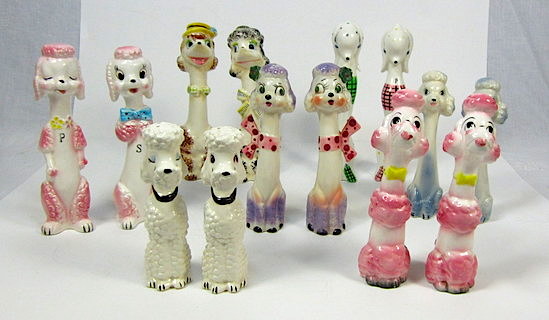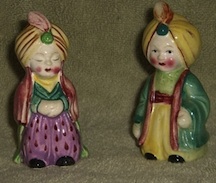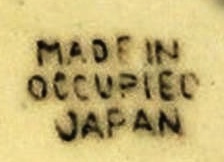
The allure of “Made in Japan” collectibles has captivated collectors and enthusiasts for decades. This fascination can be traced back to the 1940s, a tumultuous time in Japan’s history when the nation was under US occupation following World War II. From 1945 until 1952, the United States Customs Bureau mandated that all Japanese-produced items bear one of four distinct labels: “Japan,” “Made in Japan,” “Occupied Japan,” or “Made in Occupied Japan.”
These labels often appeared as red or silver foil stickers, such as the one found on the charming Genie Kids Salt and Pepper Shakers, while some manufacturers opted for an accompanying stamp. This pivotal period, known as ‘The Occupied Japanese Era,’ marked the beginning of a cultural phenomenon that would span generations and forever change the world of collectibles.
 Post-WWII, in 1946 the Japanese government implemented an astounding strategy for economic recovery – The PPS System (Priority Production System). Through maximizing its natural resources of coal and steel production to meet global demands, Japan was able to reinvigorate their economy & exports.
Post-WWII, in 1946 the Japanese government implemented an astounding strategy for economic recovery – The PPS System (Priority Production System). Through maximizing its natural resources of coal and steel production to meet global demands, Japan was able to reinvigorate their economy & exports.
Further success came when they were rewarded with additional export opportunities during the Korean War 1950-1953; by this point it became clear that Japan had achieved a significant milestone as evidenced via record high export numbers!

Support the Blog https://www.buymeacoffee.com/vintagekitchychristmas
During the 1950s-1960s, Japan experienced a period of prolific production and export. From whimsical toys to practical electronics, Occupied Japan was synonymous with affordable quality goods that ranged from ceramic trinkets to novelty items. While these once commonplace products are now coveted by Antiques & Collectibles enthusiasts around the world, at the time they were simply considered standard fare.
